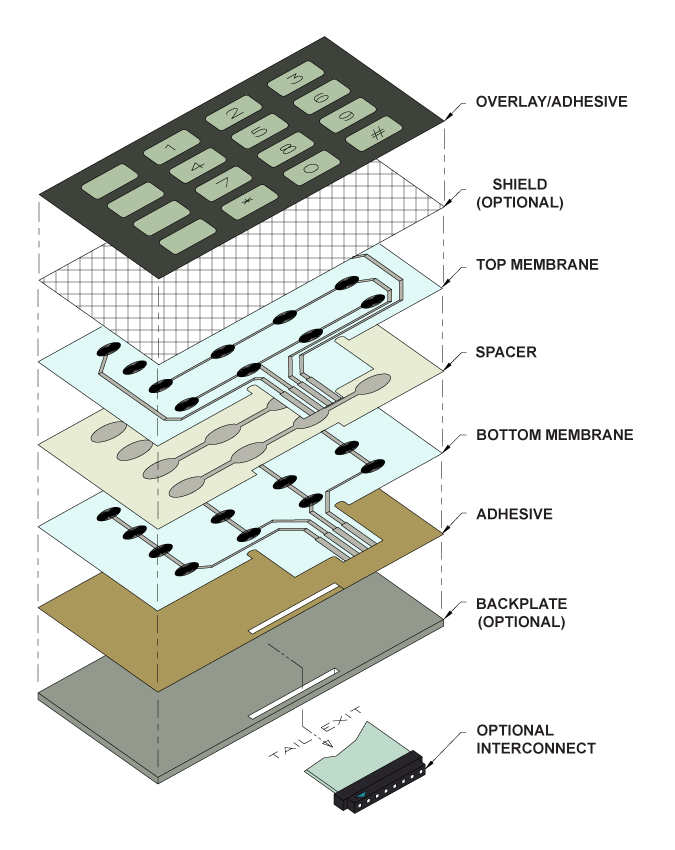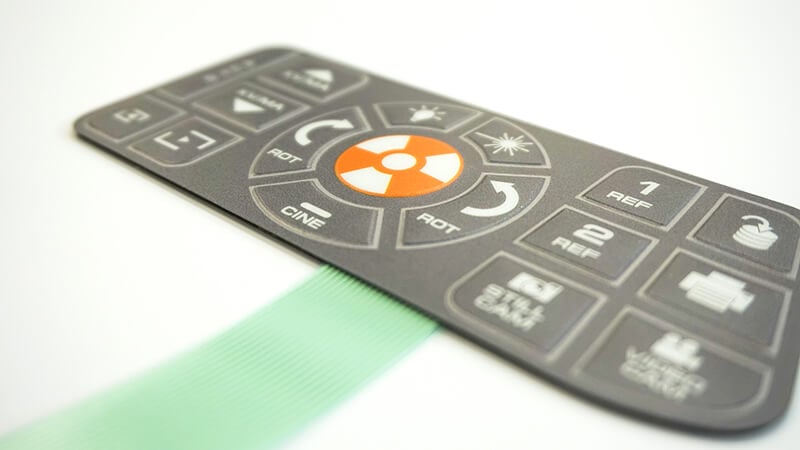Important Functions to Search For When Selecting a Membrane Switch
Important Functions to Search For When Selecting a Membrane Switch
Blog Article
Recognizing the Capability of Membrane Switches for Interface Tools
The performance of membrane switches over represents a substantial development in customer interface design, incorporating effectiveness with visual flexibility. These switches run with a multi-layered structure that translates customer interactions into electric signals, enabling both compact designs and durability versus environmental factors. As sectors progressively prioritize customer experience, comprehending the subtleties of membrane button innovation becomes essential. What ramifications do these developments hold for future applications, and just how might they redefine individual communications across numerous devices?
What Are Membrane Switches?
Membrane layer buttons are cutting-edge user interface gadgets that help with customer interaction with digital devices. These flexible elements contain numerous layers, consisting of a visuals overlay, spacer, and a published circuit layer. The layout permits a seamless combination into different electronic gadgets, improving both the aesthetic and practical aspects of interface.
Membrane switches are commonly employed in a wide array of applications, from house devices to industrial machinery and clinical tools. Their building and construction typically features a thin account, making them an excellent option for compact styles. The tactile responses given by these switches can be engineered to fulfill particular customer choices, guaranteeing reliable communication in between the user and the tool.
Sturdiness is an additional considerable advantage of membrane buttons, as they are resistant to dust, dampness, and chemicals, which enhances their life-span sought after settings. In addition, these switches can be tailored in terms of form, size, and visuals design, enabling for branding and user-specific features. Generally, membrane changes stand for a useful remedy for enhancing individual experience in digital devices, integrating capability with visual appeal in an effective fashion.
Just How Membrane Switches Work
Operating on an uncomplicated concept, membrane changes make use of a split construction to register individual input successfully. Each button includes multiple layers, including a printed circuit layer, a spacer layer, and a leading visuals layer, which are made to work together seamlessly. When an individual presses the leading layer, it presses the spacer layer, bringing the conductive aspects of the circuit layer into contact with each other.
This call creates a closed circuit, signifying the device to perform a certain feature. The style enables various setups, consisting of responsive feedback, which can improve the customer experience by providing a physical sensation upon activation. The materials made use of in membrane layer switches commonly consist of flexible substratums, such as polyester or polycarbonate, which make sure resilience and durability versus damage.

Trick Benefits of Membrane Layer Buttons

Another significant advantage is their density. Membrane switches are slim and light-weight, which allows producers to save room in their tools without compromising capability. This function is particularly advantageous in applications where weight and quantity are important considerations.
Additionally, membrane layer switches are immune to dust, dampness, and chemicals, improving their sturdiness. This resilience prolongs their lifespan and minimizes the need for constant replacements, causing expense savings with time.
Additionally, the tactile comments given by membrane layer buttons can be enhanced to boost customer communication. They can consist of features such as raised switches or distinct clicks, boosting functionality and customer experience.
Applications Throughout Industries
Interface devices using membrane layer switches are common in a vast range of markets, showcasing their adaptability and capability. Membrane Switch. In the clinical field, membrane switches are indispensable to devices such as analysis tools and patient monitoring systems, where their toughness and convenience of cleansing are crucial for maintaining hygiene requirements. In the automobile industry, these switches are utilized in dashboard controls and infotainment systems, supplying a smooth and modern-day user interface for customers.
Furthermore, the customer electronic devices market gain from membrane layer click to find out more buttons in home appliances and portable devices, where compact design and straightforward user interfaces boost customer experience. Industrial applications also utilize membrane layer switches for control panels in equipment and automation systems, stressing their effectiveness and resistance to harsh settings.
In the aerospace and protection sectors, membrane layer switches are made use of in cabin controls and tools, where integrity and efficiency under severe conditions are critical. Additionally, the gaming sector significantly includes membrane layer switches in controllers and arcade machines, contributing to an interesting customer experience. On the whole, the adaptability of membrane switches enables their widespread use across countless markets, underscoring their significance in modern customer interface style.
Future Trends in Membrane Layer Change Technology

Furthermore, the usage of innovative materials, such as polycarbonate and polyester films, is expected to increase, supplying improved durability and resistance to environmental stress factors. These products add to the overall durability of membrane layer buttons, making them ideal for harsher commercial applications.
Moreover, the incorporation of wise innovation, consisting of IoT connection, will certainly enable membrane switches to interact with various other tools and systems, helping with a much more interactive individual experience. This pattern straightens with the expanding need for clever tools throughout numerous sectors, from healthcare to consumer electronics.
Lastly, modification options are expected to broaden, enabling more makers to develop bespoke solutions customized to details customer demands and choices. These advancements will position membrane buttons as vital elements in the development of interface innovation.
Final Thought
Finally, membrane switches represent a critical advancement in interface technology, supplying a reliable and functional option for varied electronic applications. Their split building and construction assists in compact layout, while attributes such as tactile responses boost individual interaction. The sturdiness against ecological factors better solidifies their energy throughout multiple sectors. As innovations in product science and review touch picking up innovations proceed, the performance and applicability of membrane buttons are expected to broaden, strengthening their value in modern-day electronic gadgets.
Report this page